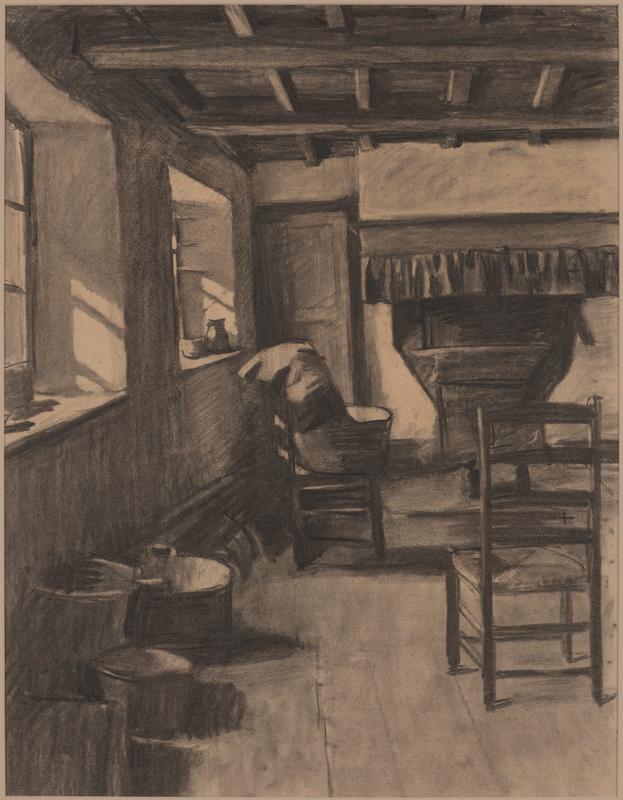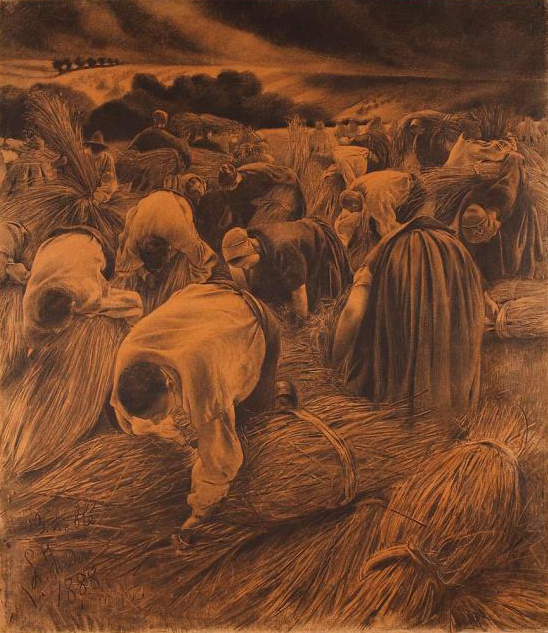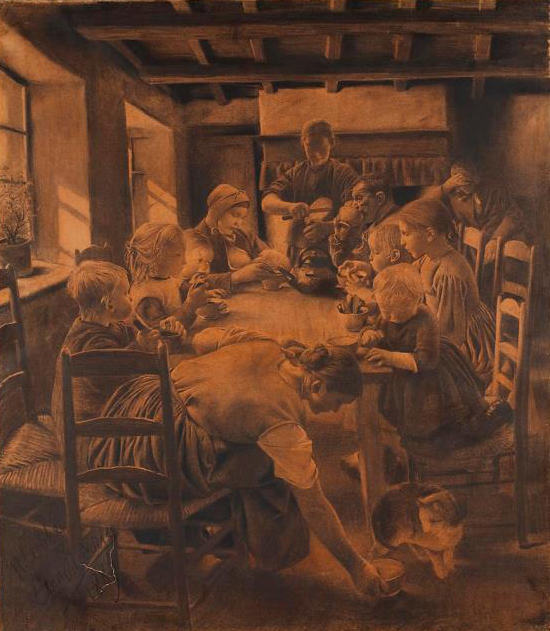
74. Baron Léon Frédéric, Study for “At the Meal” from the series “Flax and Wheat”
| Artist | Baron Léon Frédéric, Belgian, Brussels 1856–Brussels 1940 |
| Title, Date | Study for “At the Meal,” from the series “Flax and Wheat”, c. 1888–89 |
| Medium | Charcoal |
| Dimensions | 24 1/2 × 18 13/16 in. (62.3 × 47.8 cm) |
| Inscriptions + Marks | Lower right, recto: Léon Frédéric | Stamp of Georges Frédéric, verso | Brown ink, verso: Intérieur de paysan / étude du panneau no. 11 du Blé / Lin et le blé |
| Provenance | Georges Frédéric (Brussels, 1900–1981), son of the artist; [Mathieu Néouze, Paris, until 2017; to Weisberg]; Yvonne and Gabriel Weisberg, Minneapolis |
| Exhibition History | "Reflections on Reality: Drawings and Paintings from the Weisberg Collection," Mia, 2022–23 |
| References | "Oeuvres sur papier 1850–1950" (exh. cat.), Mathieu Néouze, Paris (March 2017), no. 7, ill. |
| Credit Line | Promised gift of Gabriel P. and Yvonne M.L. Weisberg, Minneapolis |
When Baron Léon Frédéric received a gold medal at the Paris Exposition Universelle of 1889, he was at the height of his naturalist period. He was busy with very large triptychs featuring scenes of daily life, mostly rural. He was making portraits of himself and others. He was also on the verge of momentous change, as his works were becoming personally symbolic, often with religious overtones.

This charcoal study is part of “Flax and Wheat” (“Le lin et le blé”), a series that consumed Frédéric in the late 1880s. The idea grew from his concern for workers, especially field laborers (fig. 1), and the crops necessary to make bread and linen, two essentials of French life.1 The series, eleven drawings for wheat, eleven for flax, might have originally been intended as the basis for paintings, but none was ever completed.

The present sheet appears to map out the domestic interior for At the Meal (fig. 2), the final drawing in the “Wheat” series. The empty room functions almost as a still-life. At the left, containers wait to be filled with wheat, while on a chair farther back a full sack slouches in a tub. The ladder-back chair in the foreground echoes the beams crisscrossing the ceiling. The quiet, orderly scene thus invites meditation on the lives of the absent inhabitants, who will eventually descend en masse to share something to eat and drink.
Frédéric was named a baron in 1904 not because he was part of the aristocracy—his father was a jeweler in Brussels—but because the Belgian king (in this case Albert I) uses the title to honor the country’s outstanding citizens.
GPW
Notes
On the creation of this series, see Octave Maus, “Léon Frédéric,” L’Art Moderne, September 1, 1901, no. 33, pp. 291–93, and September 8, 1901, pp. 299-301. Maus writes that “the series of drawings entitled Le Lin et Le Blé (1888–1889) captures in one cycle of compositions, which have the charm of instantaneous rustic life, the rural poem of linen/cloth and bread” (p. 291). Maus adds that in the village of Nafraiture, Belgium, “Léon Frédéric conceived of and executed this moving diptych, Flax and Wheat, which might have been conceived for the mill of a Maison du Peuple or for the linen industry” (p. 299). Frédéric describes the drawings (11 for flax and 11 for wheat) as “two simple narratives which are fundamental to food and clothing, which is to say to human life” (p. 292). ↩︎